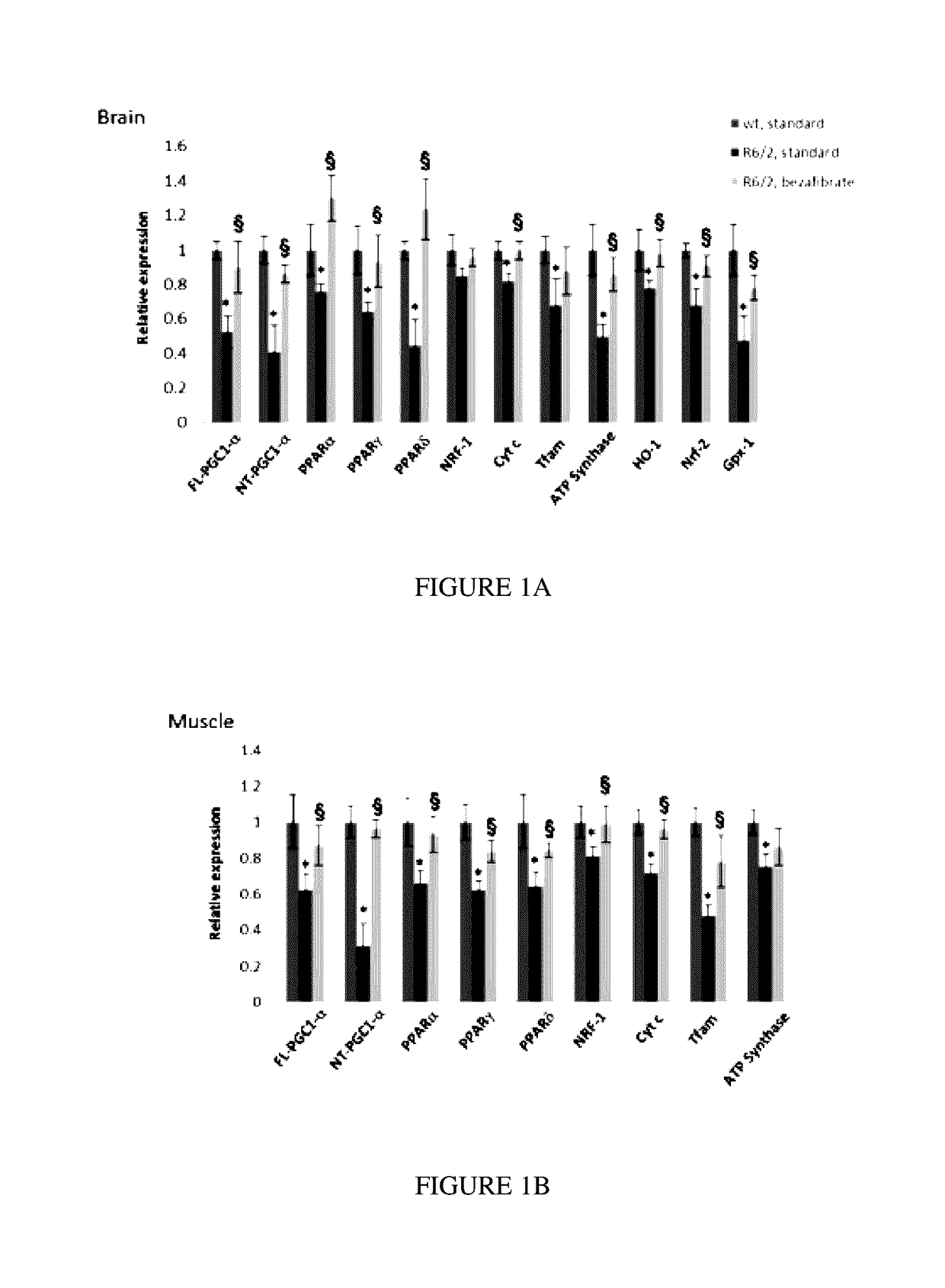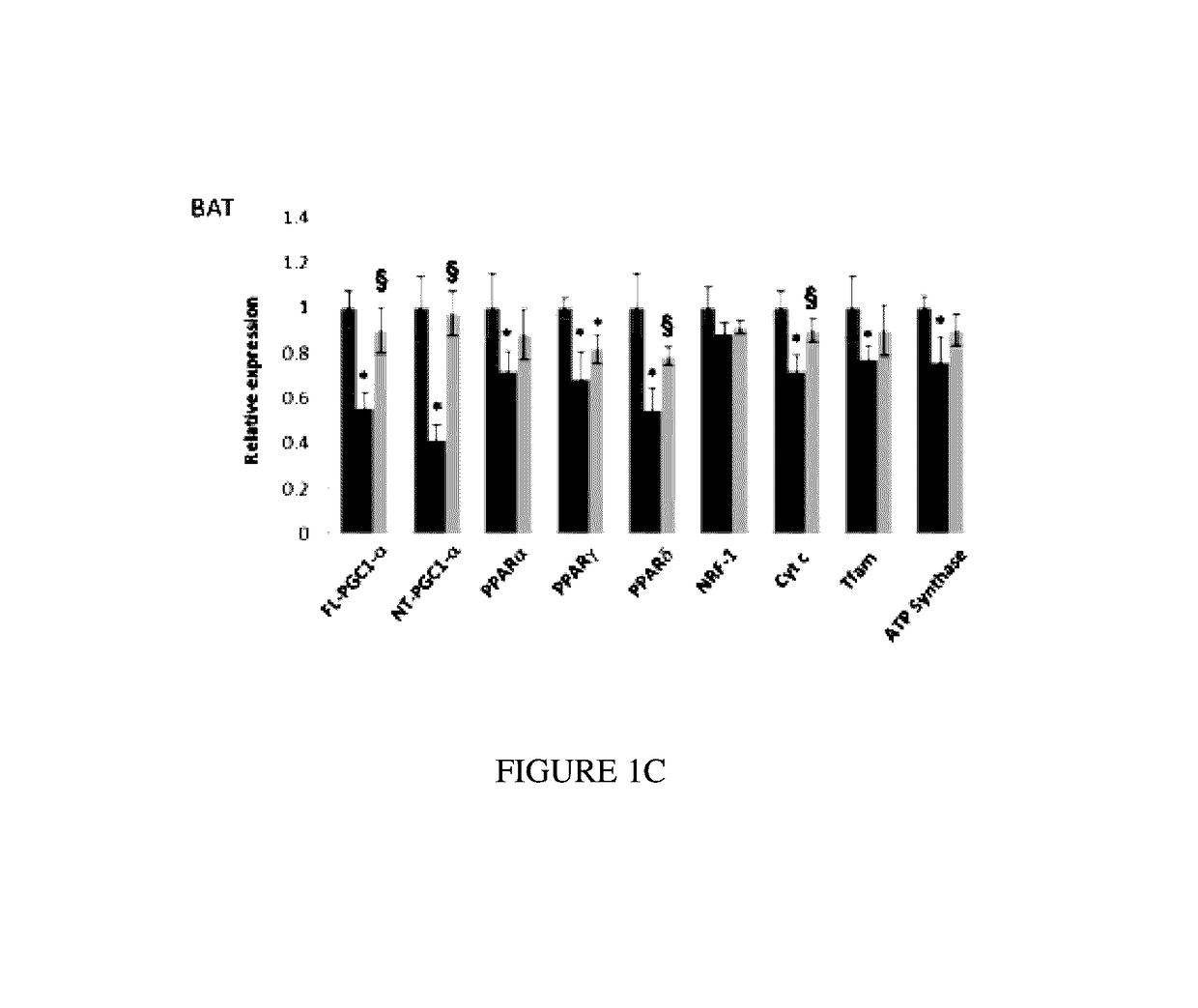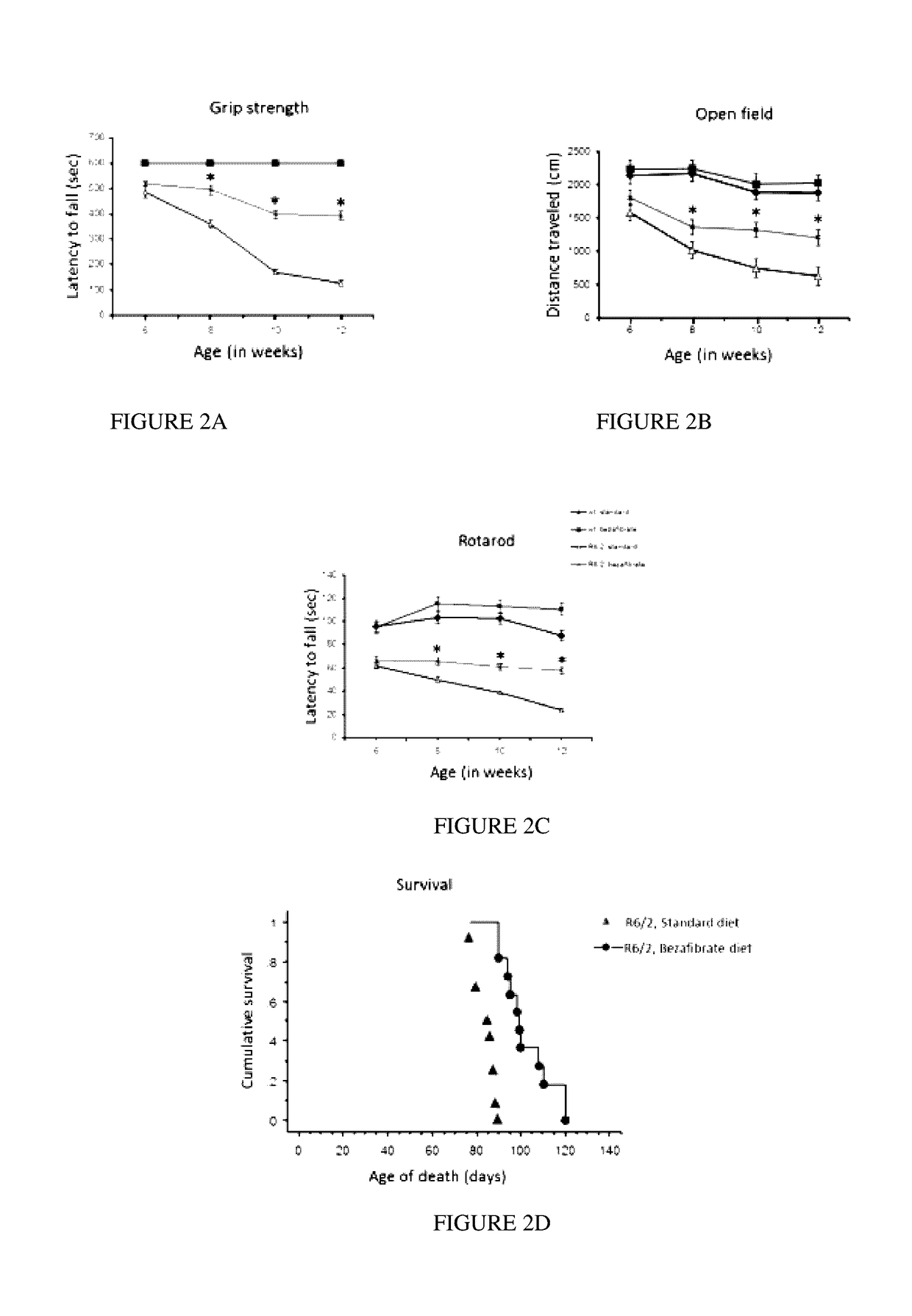Use of pan-PPAR agonists for treatment of tauopathies
a technology of pan-ppar agonists and tauopathies, which is applied in the field of use of pan-ppar agonists for treatment of tauopathies, can solve the problems of pan-ppar agonist studies in transgenic mouse models of neurodegenerative diseases, and achieve enhanced pan-ppar neuroprotective effects, reduce syndroms, and enhance therapeutic effects
- Summary
- Abstract
- Description
- Claims
- Application Information
AI Technical Summary
Benefits of technology
Problems solved by technology
Method used
Image
Examples
example 1
Bezafibrate's Effects on the Huntington Disease (Hd) Materials and Methods for Hd Work
Reagents
[0089]Bezafibrate, malondialdehyde standard (MDA, 98% purity) and other chemicals were purchased from Sigma (St. Louis, Mo., USA). R6 / 2 mice were from Jackson Laboratory, Bar Harbor, USA. Anti-calbindin was from Chemicon, Temecula, Calif., USA; anti-malondialdehyde modified protein was a gift from Dr. Craig Thomas and anti-glial fibrillary acidic protein was from Dako, Denmark. The sequences of all the primers used in this study have been published elsewhere and / or are available on request (Chaturvedi et al. 2009; Chaturvedi et al 2010).
Animal Treatment
[0090]All experiments were conducted within National Institutes of Health guidelines for animal research and were approved by the Weill Cornell Medical College Animal Care and Use Committee. The animals were kept on a 12-hr light / dark cycle, with food and water available ad libitum. Mice were fed standard diet containing 0.5% bezafibrate or s...
example 2
Bezafibrate's Effects on Tauopathy Materials and Methods for Tauopathy Work
Animals and Treatment
[0116]Animals were generated by breeding P301S transgenic male mice with wild-type female mice obtained from Jackson Laboratory (Bar Harbor, Me., USA). Offspring were genotyped by PCR of tail DNA. P301S transgenic mice and their wild-type littermates were randomly assigned to receive either control diet (LabDiet 5002) or 0.5% bezafibrate diet (Sigma, St. Louis, Mo., USA) from 1 to 10 months of age ad libitum. The chow was pelleted by Purina-Mills (Richmond, Ind., USA). Behavioral analyses were performed at 5, 7, and 9 months of age. Histopathological and biochemical analyses were conducted at 10 months of age on the same animals. All experiments were approved by the Weill Cornell Medical College Institutional Animal Care and Use Committee.
Behavior
[0117]One week prior to behavioral testing, the experimenter handled the mice daily in order to habituate them. Body weights were recorded every...
PUM
 Login to View More
Login to View More Abstract
Description
Claims
Application Information
 Login to View More
Login to View More - R&D
- Intellectual Property
- Life Sciences
- Materials
- Tech Scout
- Unparalleled Data Quality
- Higher Quality Content
- 60% Fewer Hallucinations
Browse by: Latest US Patents, China's latest patents, Technical Efficacy Thesaurus, Application Domain, Technology Topic, Popular Technical Reports.
© 2025 PatSnap. All rights reserved.Legal|Privacy policy|Modern Slavery Act Transparency Statement|Sitemap|About US| Contact US: help@patsnap.com



